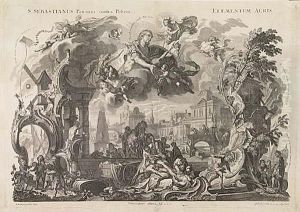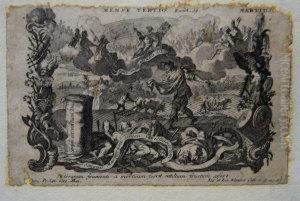Johann Baptist Klauber Paintings
Johann Baptist Klauber, born in 1712 in the region that is now Germany, was an influential figure in the world of European printmaking during the 18th century. His contributions to the art world are particularly noted for their intricate detailing and the blending of religious and secular themes, which was a reflection of the era's complex socio-political and religious landscape. Klauber's work is emblematic of the Baroque and early Rococo periods, showcasing the transition in European art towards more fluid, dynamic, and ornamental styles.
Klauber’s career was notably centered in Augsburg, a city renowned for its vibrant artistic and cultural scene during the 18th century. He was part of a family deeply embedded in the arts; his collaboration with his brother Joseph Sebastian Klauber was significant, leading to the establishment of the Klauber brothers' printmaking workshop. This workshop gained a prestigious reputation for producing high-quality engravings, religious prints, and illustrations, catering to a diverse clientele that ranged from the church to the burgeoning middle class seeking art for private devotion and decoration.
The Klauber workshop's output was prolific and varied, encompassing religious iconography, portraits, allegorical scenes, and decorative motifs. Johann Baptist Klauber's skill in engraving allowed for the creation of works that were not only technically impressive but also rich in detail and expression. His ability to infuse prints with a sense of depth and texture made them highly sought after during his lifetime and contributed to the workshop's economic success and artistic renown.
Despite his significant contributions to the art of printmaking, Johann Baptist Klauber's name is not as widely recognized today as some of his contemporaries. However, his works continue to be studied and admired for their beauty and technical excellence. They hold a place in the collections of many major museums and art galleries, serving as a testament to his skill and the enduring appeal of his artistic vision.
Johann Baptist Klauber passed away in 1787, leaving behind a legacy that has influenced the course of art history in the German-speaking regions of Europe. His life and work are reminders of the rich tapestry of 18th-century European art and the pivotal role that printmaking played in the dissemination of artistic and cultural ideas during this period.

